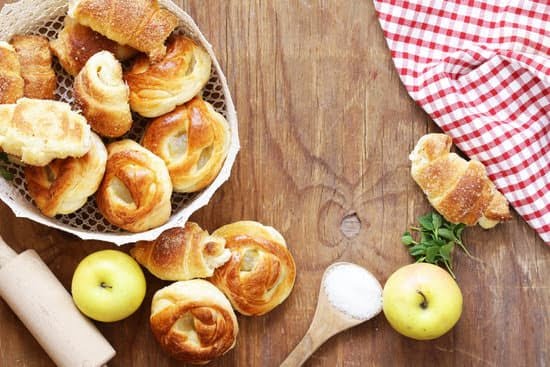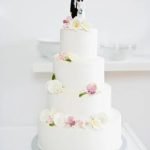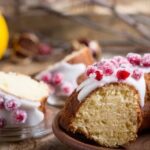Are you looking to elevate your cake decorating game? One essential tool in the world of pastry art is a piping bag, which allows for precise and decorative frosting application.
In this article, we will explore how to make your own cake decorating piping bag, the types of piping bags available, essential tools and materials needed, step-by-step guide on making your own piping bag, tips for using piping bags for cake decorating, creative piping techniques for cake decoration, and troubleshooting common issues with piping bags.
Piping bags come in various forms – from disposable to reusable options. Each type has its own set of advantages and disadvantages that cater to different needs. Understanding which type is best suited for your specific project is crucial in producing professional-looking results.
To create your own homemade piping bag, you only need a few tools and materials that are commonly found in any kitchen or at a local baking supply store. With just a few simple steps, you can have a custom-made piping bag ready for all your decorating needs. Plus, we’ll cover some handy tips for using the piping bags effectively and creatively when decorating cakes and other baked goods.
Types of Piping Bags
When it comes to cake decorating, having the right tools can make all the difference. One essential tool for any cake decorator is the piping bag. Piping bags come in two main types: disposable and reusable. Each type has its own benefits and drawbacks, so it’s important to understand the differences between them.
Disposable piping bags are convenient and easy to use. They can be thrown away after each use, which means no cleanup is required. This can be a huge time-saver, especially when working on multiple different colors or types of icing. However, disposable piping bags can also be less environmentally friendly and more expensive in the long run.
On the other hand, reusable piping bags are more cost-effective and environmentally friendly. They can be washed and reused multiple times, making them a more sustainable option. Reusable piping bags also come in a variety of materials, including cloth and silicone, offering decorators different options based on their preferences.
One of the most significant advantages of using reusable piping bags is that they can easily be customized to fit various cake decorating needs. With just a few simple steps, decorators can create their own piping bags at home with materials they likely already have in their kitchen. So let’s take a look at how to make a cake decorating piping bag at home.
Essential Tools and Materials Needed for Making Piping Bags
When it comes to making your own piping bag for cake decorating, you’ll need a few essential tools and materials. By having the right supplies on hand, you can easily create a custom piping bag that suits your specific cake decorating needs.
Materials Needed
To make your own piping bag, you will need parchment paper or plastic cling wrap. Parchment paper is the preferred material for making disposable piping bags, while plastic cling wrap can be used for a quick and easy reusable option. You will also need scissors to cut the material to size.
Tools Needed
In addition to the materials, you will need a ruler to measure and cut the parchment paper or plastic wrap to the desired size. A roll of masking tape or adhesive tape is essential for sealing the piping bag once it’s filled with frosting or icing.
Optional Tools
For added convenience, consider investing in a piping bag tip and coupler set. The tip attaches to the end of the piping bag and allows for different designs when decorating cakes. The coupler allows you to easily switch out tips without changing the entire piping bag.
By having these essential tools and materials on hand, you can easily create your own customized piping bags for cake decorating needs. With practice and experimentation, you’ll be able to master various techniques and achieve professional-looking results with your homemade piping bags.
Step-by-Step Guide on How to Make Your Own Piping Bag
Materials Needed
To make your own piping bag for cake decorating, you will need a few essential materials. These include parchment paper, wax paper, or even a plastic bag, depending on your preference. You will also need scissors to cut the paper or plastic to the desired size and shape, as well as tape or a rubber band to secure the piping bag once it is filled with icing.
Step 1: Choosing the Material
When making your own piping bag, consider the material you want to use. Parchment paper is often preferred for its stiff and sturdy nature, while wax paper is more flexible. A plastic bag can also be used if you prefer a more disposable option. Cut the chosen material into a triangle shape with one rounded tip and two equal sides.
Step 2: Folding and Forming the Piping Bag
Once you have your triangle cut out of the chosen material, take one of the bottom corners of the triangle and fold it over towards the opposite side, creating a cone shape. Then, take the other bottom corner of the triangle and fold it over to meet the first fold, forming a seam along the edge. Secure this seam with tape or a rubber band at least an inch from the tip of the cone to prevent any leakage.
By following these simple steps and using readily available materials, you can easily create your own piping bags for cake decorating at home. This cost-effective alternative allows for personalized designs and shapes in cake decoration without having to invest in costly tools or equipment. Experiment with different materials and techniques to find what works best for you in achieving beautiful cake decorations.
Tips for Using Piping Bags for Cake Decorating
When it comes to cake decorating, using a piping bag can make a significant difference in the final result of your creation. Whether you are a beginner or an experienced baker, there are some tips and tricks that can help you get the most out of your piping bags.
One important tip for using piping bags for cake decorating is to ensure that the consistency of your frosting or icing is appropriate for the design you want to create. For intricate designs or fine details, you will want a thicker consistency to hold its shape, while for covering larger areas, a thinner consistency will work better. It’s also essential to avoid overfilling your piping bag, as this can lead to messy and uneven results.
Another crucial tip is to practice proper hand positioning and pressure control when using a piping bag. Holding the bag at the right angle and applying consistent pressure will help you achieve smooth and even lines without any breaks or air bubbles in the frosting. Additionally, it’s important to have a good grip on the piping bag to maintain control over your designs.
Lastly, make sure to clean your piping bags thoroughly after each use to prevent any leftover frosting from drying out and clogging the tip. Proper maintenance of your piping bags will ensure they last longer and remain in good condition for future use.
| Tips for Using Piping Bags | Cake Decorating |
|---|---|
| Ensure appropriate consistency of frosting | Thick for intricate designs, thin for larger areas |
| Practice proper hand positioning and pressure control | To achieve smooth and even lines |
| Clean piping bags thoroughly after each use | To prevent clogging and maintain good condition |
Creative Piping Techniques for Cake Decoration
Cake decorating is an art that allows for endless creativity and expression. Piping bags are essential tools for achieving intricate designs and adding decorative elements to cakes. Once you have learned how to make a cake decorating piping bag, it’s time to explore the various creative piping techniques that can take your cake decoration to the next level.
Here are some creative piping techniques for cake decoration:
- Writing and Lettering: Use a small round tip to pipe out letters, words, or messages onto your cake. Practice with different pressure and speed to achieve consistent lettering.
- Rosettes and Blooms: Create beautiful floral designs by using a petal tip to pipe rosettes, rosebuds, or other flower shapes onto your cake. Vary the pressure and angle of the piping bag for different petal effects.
- Borders and Edging: Use a star tip to pipe decorative borders or edging around the top or bottom of your cake. Experiment with different tip sizes and patterns for unique border designs.
In addition to these basic piping techniques, there are endless possibilities for creating intricate designs with just a little practice and experimentation. Whether you’re looking to add simple embellishments or elaborate decorations to your cakes, mastering different piping techniques will allow you to unleash your creativity and elevate your cake decorating skills.
With these creative piping techniques in your repertoire, you’ll be able to bring any cake design idea to life with precision and flair. Remember that practice makes perfect, so don’t be afraid to experiment and have fun with different piping techniques until you find the perfect style for your cakes.
Troubleshooting Common Issues With Piping Bags
When it comes to using piping bags for cake decorating, there are a few common issues that may arise. Knowing how to troubleshoot these problems can help ensure that your cake decorations come out looking professional and polished. Here are some common issues with piping bags and how to address them:
1. Clogged Tip: One frustrating issue that can occur when using a piping bag is a clogged tip. This can happen if small bits of icing or frosting get stuck in the tip, preventing a smooth flow of decoration. To fix this issue, carefully remove the clogged tip and use a toothpick or small brush to clear any blockages.
2. Leaking Bag: Another issue that decorators may encounter is a leaking piping bag. This can be caused by a small hole in the bag or improper sealing at the top. To prevent leaking, always double-check the seal at the top of the bag and make sure there are no holes along the seam. If you do notice a leak, transfer your icing or frosting to a new bag and secure it tightly.
3. Uneven Pressure: Sometimes, decorators may find that they have difficulty maintaining consistent pressure when squeezing the piping bag, resulting in uneven lines or decorations. To address this issue, practice squeezing the bag with even pressure before decorating your cake. Additionally, take breaks as needed to prevent hand fatigue, which can also lead to inconsistent pressure.
By being mindful of these common issues and knowing how to address them, you can enhance your cake decorating skills and create beautifully decorated treats using homemade piping bags.
Conclusion
In conclusion, mastering the art of cake decorating with homemade piping bags can elevate your baking skills to new heights. Whether you choose a disposable or reusable piping bag, knowing how to make your own allows for creativity and customization in your designs. By using essential tools and materials, following a step-by-step guide, and incorporating creative piping techniques, you can create stunning decorations that will leave a lasting impression on your friends and family.
Knowing how to make cake decorating piping bags opens up a world of possibilities for addinng a personal touch to your baked goods. From simple rosettes and borders to intricate designs and lettering, the versatility of homemade piping bags enables you to bring any cake or dessert to life. By understanding the best practices for using and troubleshooting common issues with piping bags, you can ensure that your creations are not just visually appealing but also professional-looking.
In essence, learning how to make cake decorating piping bags is an essential skill for any aspiring baker or pastry chef. With dedication, practice, and a willingness to experiment, you can take your cake decorating abilities to the next level and unleash your creativity in ways you never thought possible.
So go ahead, gather your tools and materials, follow the steps outlined in this article, and get ready to impress with beautifully piped cakes and treats that showcase your unique style.
Frequently Asked Questions
How Do You Make a Cake Piping Bag at Home?
To make a cake piping bag at home, you can use a plastic resealable sandwich bag. Fill the bag with frosting and then snip off a small corner of the bag to create a makeshift piping tip. This allows you to pipe frosting onto your cake in patterns or designs.
What Can I Use Instead of a Piping Bag?
If you don’t have a piping bag, there are several alternatives you can use. One option is to use a plastic resealable sandwich bag as a makeshift piping bag by cutting off a small corner.
Another alternative is to use a sturdy plastic bottle with a small nozzle, such as a ketchup or mustard bottle, to squeeze out the frosting onto your cake.
Can You Use a Ziploc Bag as a Piping Bag?
Yes, you can use a Ziploc bag as a piping bag by filling it with frosting and cutting off one of the bottom corners to create an opening for piping. It’s an easy and convenient way to pipe frosting onto cakes and other baked goods without needing an actual piping bag.

Welcome to our cake decorating blog! My name is Destiny Flores, and I am the proud owner of a cake decorating business named Cake Karma. Our mission is to provide delicious, beautiful cakes for all occasions. We specialize in creating custom cakes that are tailored specifically to each customer’s individual needs and tastes.





